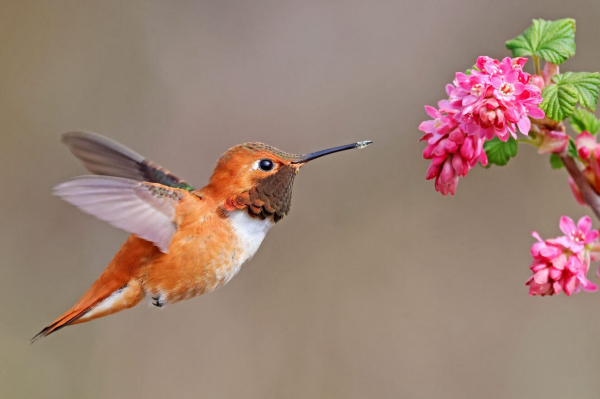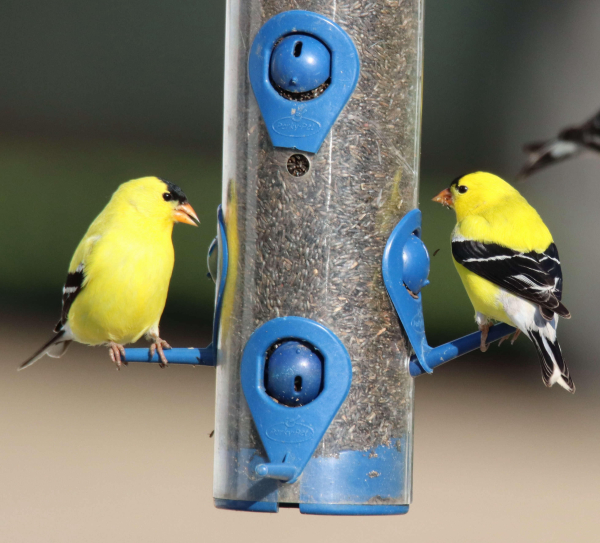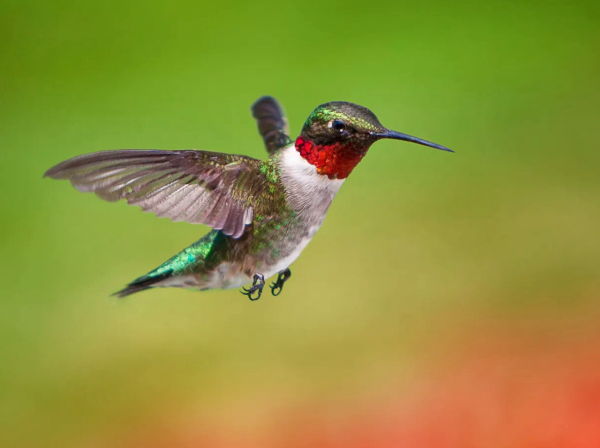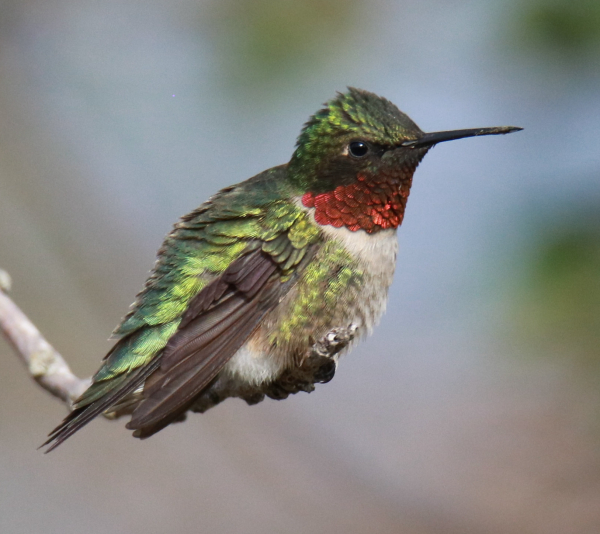Hummingbird Magnets – Potted Flowering Plants
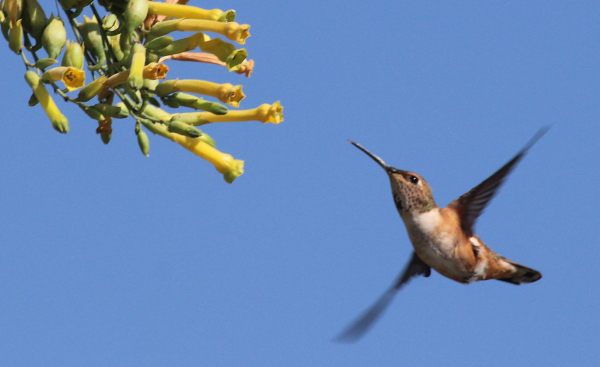
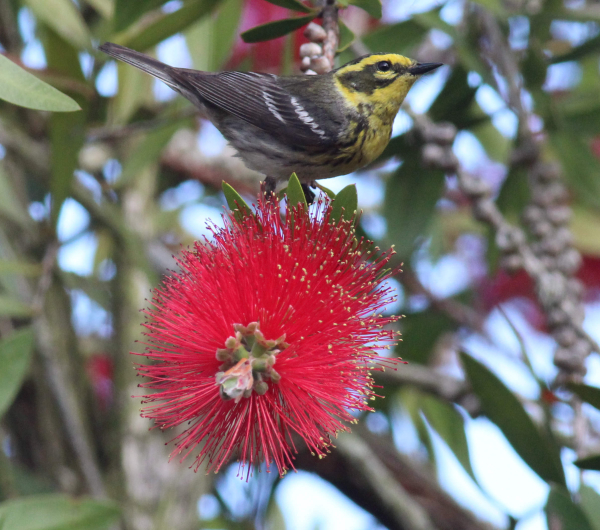
Urban birders living in smaller spaces often have a hard time creating a birdscape, but as hummingbirds arrive, everyone can be helpful to migrating and arriving hummers by having sugar-water feeders in position – and there’s one more step people short on space can add. Potted flowering plants provide flower-nectar that is a great second offering for hummingbirds – try sharing a mix of flowering plants, vines, and even small shrubs that will add a lot to the beauty of your balcony, windowsill, or patio.
If you have more space in a yard or larger property, you can add potted flowering plants to add a new focal point, including the pots themselves, which can be used to accent a design plan. Potted plants are versatile in that they are mobile – you can move them anywhere in your yard, any time you’re ready for a change – and you can add other flowering potted plants through the summer. You may even wish add some hummingbird-friendly potted plants to add color and design element to your feeding station.
Flowering Variety
Using the below lists as examples, it’s best to buy plants that are already blooming from a local nursery, and the professionals there can help with local favorites. Try to emphasize native plants, and be aware that hummingbirds tend to prefer red, orange, and yellow flowers, primarily because these flowers tend to have higher sugar contents in their flower nectar.
As you celebrate spring’s return, celebrate hummingbirds and other migrants by providing mixes of flowering plants, including favorites such as red salvia, cardinal flower, bee balm, hummingbird mint, lupine, scarlet monkeyflower, fox glove, paintbrush, yarrow, and more.
Vines may be even better, and they can be very decorative, especially trumpet vines, honeysuckle, flowering tobacco, and scarlet creeper. You can even try small specimens of shrubs like bottlebrush, tree tobacco, butterfly bush, red huckleberry, hibiscus, firebush, crape myrtle, and rose of Sharon.
You can replant the varieties you buy, perhaps using a decorative pot or two that you like, or you can leave the plants in the pots you bought them in. It’s best to make sure there is at least one drainage hole in each pot, and it’s always a good idea to place each pot in a saucer that will hold water that drains through the planter. Like the flowers themselves, the vessels you plant them in can add color and design to your outdoor space.
If you have a larger space, you may wish to develop a planting area especially for hummingbird plants. Hummingbird gardens are always a big hit among birders and birds. Again, favor native plants when you can, and avoid using chemicals on flowering plants meant for hummingbirds. Most of all, enjoy selecting some colorful flowering plants for your home, whether for you deck, patio, balcony, or garden throughout this spring and summer.


